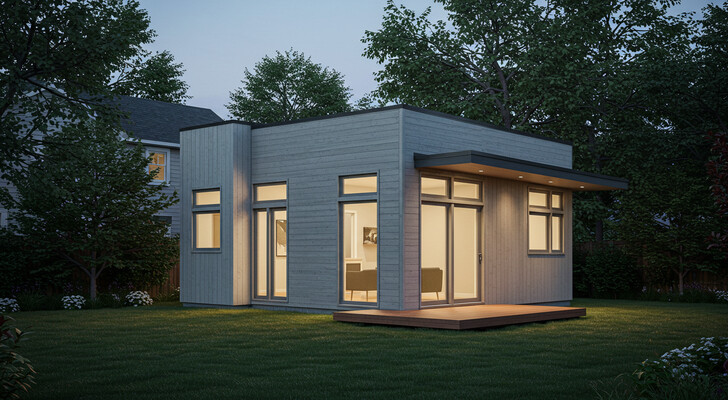
Across the United States, families are rethinking how to care for aging parents and grandparents in ways that are both affordable and compassionate. One solution gaining momentum in 2025 is the “granny pod,” a small but fully equipped home built in the backyard of a primary residence. These accessory dwelling units (ADUs) provide seniors with privacy and independence while keeping them close to loved ones, making them an attractive alternative to costly assisted living facilities or nursing homes.
Innovative Housing for Aging Parents
As families across the United States seek ways to care for elderly loved ones without relying solely on nursing homes or assisted living facilities, backyard housing solutions like granny pods are becoming increasingly popular. These compact, private units offer seniors the ability to live independently while still staying close to family. With the rising costs of housing and long-term care in 2025, granny pods are emerging as a cost-conscious and compassionate choice for multigenerational households.
Understanding Granny Pods
Granny pods, officially categorized as accessory dwelling units (ADUs), are small, fully functional homes placed on the property of a main residence. They are designed with the goal of balancing autonomy and support, giving seniors their own space while ensuring loved ones are nearby. Often featuring the comforts of a traditional home in a smaller footprint, these units are quickly becoming a mainstream elder care solution across the country.
Design and Features of ADUs
Most granny pods include everything needed for day-to-day living, such as a bedroom, private bathroom, kitchenette, and in some cases, a compact living area. Some units are custom-built to suit specific needs, while others come prefabricated and ready to install. Built in the backyard of a family home, they allow older adults to enjoy independence without feeling isolated, while families have peace of mind knowing help is close at hand.
Cost of Building in 2025
The price of a granny pod in 2025 largely depends on design, size, and location. Families can generally expect to spend between $90,000 and $180,000 for a unit that includes installation, utilities, and permits. While this investment may seem high initially, it is often more affordable in the long term compared to the ongoing costs of assisted living or nursing home care, which can easily exceed $50,000 each year.
Advantages of Granny Pods
The biggest benefit of granny pods is their ability to keep families connected. Elderly parents or grandparents can maintain independence while still being close enough for relatives to provide daily support. Many modern ADUs are also built with safety in mind, incorporating features like wide doorways for wheelchair access, slip-resistant flooring, and bathroom grab bars. Some even come with smart monitoring technology to assist caregivers in ensuring their loved ones remain safe.
Flexibility and Long-Term Use
One of the reasons granny pods are appealing to homeowners is their versatility. While they serve as senior housing initially, they can later be repurposed as guest houses, home offices, rental spaces, or housing for young adult children. Builders in 2025 offer a wide range of designs, allowing families to customize everything from layout to finishes, ensuring the space meets both current and future needs.
Potential Drawbacks
Despite their benefits, granny pods are not without challenges. Local zoning regulations and building codes may restrict or complicate the ability to add an ADU to certain properties. Some municipalities encourage their construction as a solution to housing shortages, while others impose limits on their size and use. Beyond regulatory issues, families also need to consider the significant upfront cost and the ongoing maintenance expenses that come with owning an additional unit.
Weighing the Value
For many households, the investment in a granny pod pays off over time, both financially and emotionally. The savings compared to institutional care can be substantial, and families often feel reassured knowing their loved ones are nearby. Still, the decision requires careful consideration of budget, local laws, and long-term plans for the property.
Final Thoughts
Granny pods represent a forward-thinking approach to elder care in the United States. They provide a balance between independence and family connection, offering seniors dignity and security while easing the burden of high care costs. Though they may require navigating legal restrictions and covering a sizable initial expense, their long-term flexibility and emotional benefits make them a compelling option in 2025. More families are recognizing that ADUs are not just a temporary solution but a lasting investment in both care and housing stability.


